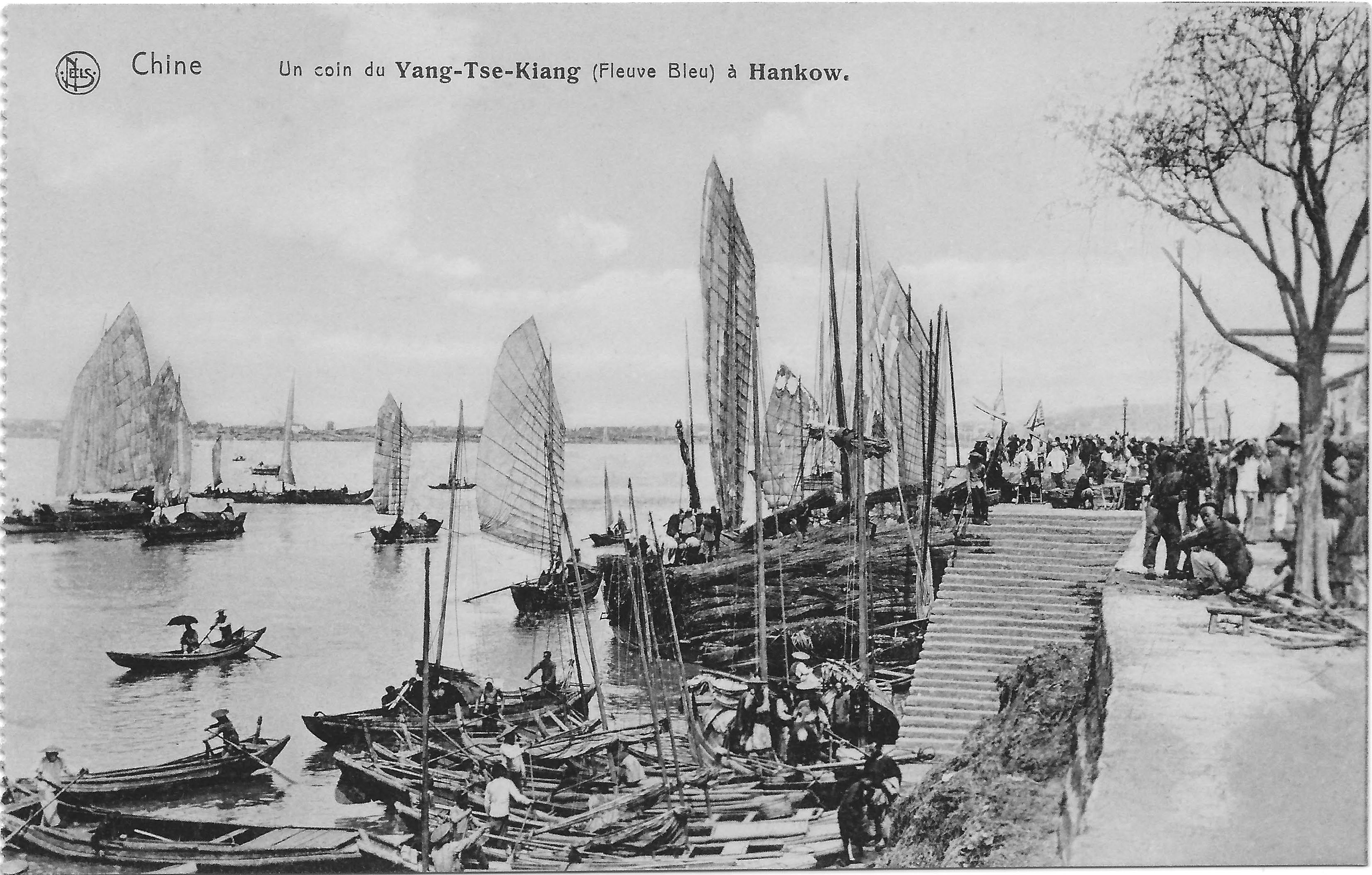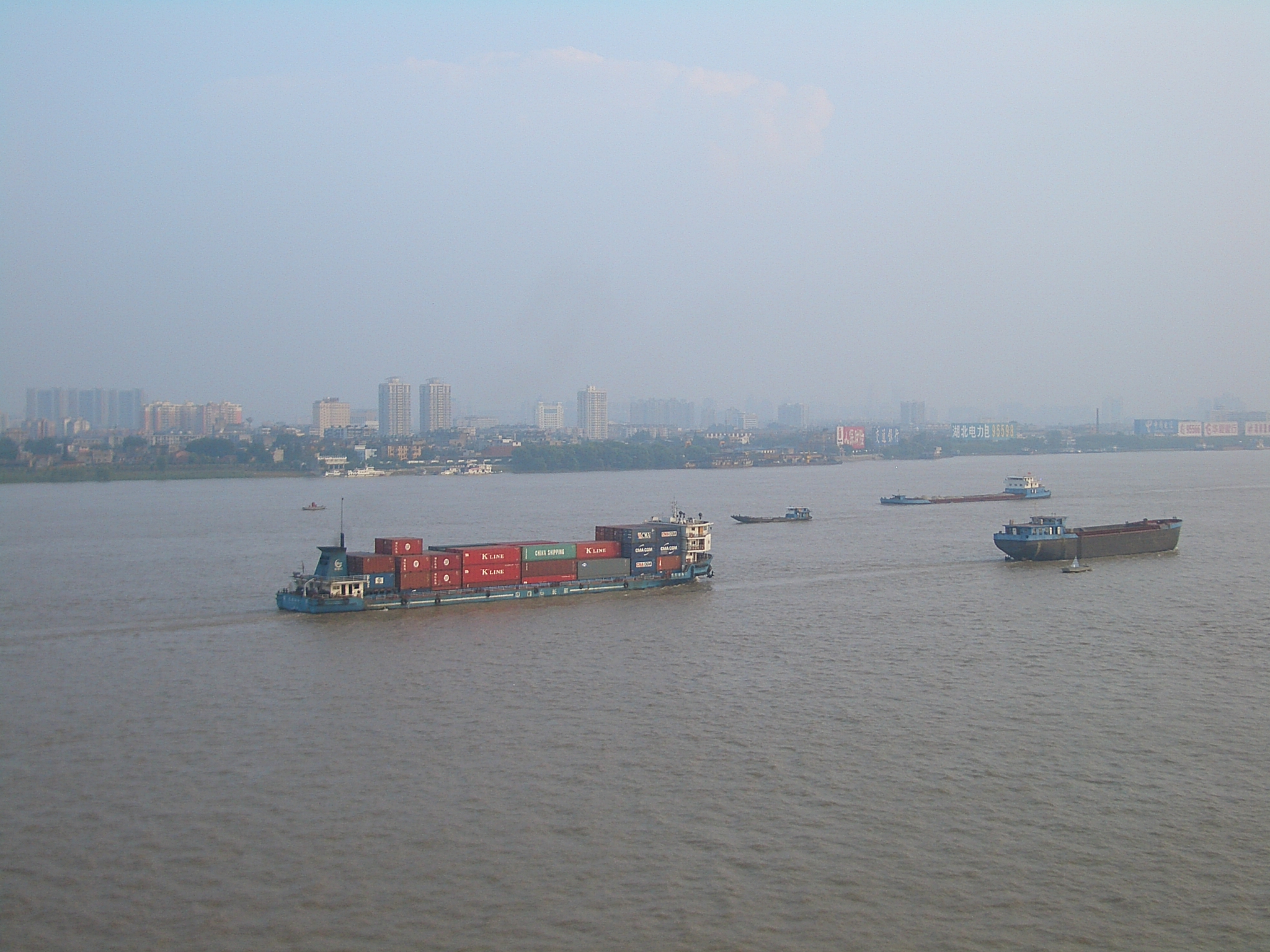Port of Wuhan on:
[Wikipedia]
[Google]
[Amazon]
The Port of Wuhan is the natural river port of the

 The planned reorganization of the port would create 15 port areas by 2020:
*
*Hannan Port Area (汉南港区)
**''Dengnan Operations Area'' () Dry bulk cargo, general cargo, Ro-ro vehicles
**''Shamao Operations Area'' () Ro-ro vehicles, bulk cargo and general cargo.
*Junshan Port Area():
The planned reorganization of the port would create 15 port areas by 2020:
*
*Hannan Port Area (汉南港区)
**''Dengnan Operations Area'' () Dry bulk cargo, general cargo, Ro-ro vehicles
**''Shamao Operations Area'' () Ro-ro vehicles, bulk cargo and general cargo.
*Junshan Port Area():
 The Port of Wuhan is mainly operated by the Wuhan Port Group Co., Ltd. ()
The Port of Wuhan is mainly operated by the Wuhan Port Group Co., Ltd. ()
Port of Wuhan websiteWuhan Container Terminal website
Wuhan City Port and Navigation Management Office (local MSA office)
Wuhan Xingang Sanjiang Port Economic Area
* {{coord, 30, 38, 38, N, 114, 20, 45, E, display=title Buildings and structures in Wuhan Ports and harbours of China Transport in Wuhan
sub-provincial
A sub-provincial division () in China is a prefecture-level city governed by a province promoted by half a level. Thus, it is half a level under the provincial level (hence the name sub-provincial) but half a level above the prefecture-level.
T ...
city of Wuhan
Wuhan (, ; ; ) is the capital of Hubei, Hubei Province in the China, People's Republic of China. It is the largest city in Hubei and the most populous city in Central China, with a population of over eleven million, the List of cities in China ...
, Hubei Province
Hubei (; ; alternately Hupeh) is a landlocked province of the People's Republic of China, and is part of the Central China region. The name of the province means "north of the lake", referring to its position north of Dongting Lake. The prov ...
, People's Republic of China
China, officially the People's Republic of China (PRC), is a country in East Asia. It is the world's most populous country, with a population exceeding 1.4 billion, slightly ahead of India. China spans the equivalent of five time zones and ...
. The port lies at the confluence of the Yangtze
The Yangtze or Yangzi ( or ; ) is the longest river in Asia, the third-longest in the world, and the longest in the world to flow entirely within one country. It rises at Jari Hill in the Tanggula Mountains (Tibetan Plateau) and flows ...
and Hanjiang Hanjiang may refer to the following in China:
* Han River (Yangtze River tributary) (), a tributary of the Yangtze, in Shaanxi and Hubei
* Han River (Guangdong) (), mostly in Guangdong, flowing into the South China Sea
* Hanjiang District, Putian ( ...
rivers. It is able to handle ocean-going ships of 10,000DWT. In 2013, it had a throughput of 42.2 million tons of cargo, and 513,229 TEU of containers.
History

Hankou
Hankou, alternately romanized as Hankow (), was one of the three towns (the other two were Wuchang and Hanyang) merged to become modern-day Wuhan city, the capital of the Hubei province, China. It stands north of the Han and Yangtze Rivers wher ...
was one of the Treaty Ports
Treaty ports (; ja, 条約港) were the port cities in China and Japan that were opened to foreign trade mainly by the unequal treaties forced upon them by Western powers, as well as cities in Korea opened up similarly by the Japanese Empire.
...
opened by the Treaties of Tientsin in 1858.
Layout
The Port of Wuhan is located on the shores of the Yangtze and Hanjiang rivers. The river channel is 10m deep during the wet season. As of 2012 the WHPG had 51 production berths, 122.45 km2 of port areas, 7,579m of quayside, 43.4 ha of warehouses. Including all other minor operators, the port had 244 berths. As of 2012, Wuhan Port had 24 port areas, of which 9 were the main Port Areas: *Jinkou Heavy Lift Cargo Port Area (金口重件港区) *Tunkou Vehicles and Oil Port Area (沌口汽车与油品港区) *Hanyang Container and Bulk Cargo Area (汉阳集装箱与散杂货港区) *Hankou Tourist and Passengers Port Area (汉口旅游客运港区) *Qingshan Ore and Steel Port Area (青山矿石与4港) *Zuoling Dangerous Chemicals Port Area (左岭危化品港区) *Yangluo Container Port Area (阳逻集装箱港区) *Huashan Container Port Area (花山集装箱港区) *Linsifang Coal Port Area (林四房煤炭港区): Under planning The planned reorganization of the port would create 15 port areas by 2020:
*
*Hannan Port Area (汉南港区)
**''Dengnan Operations Area'' () Dry bulk cargo, general cargo, Ro-ro vehicles
**''Shamao Operations Area'' () Ro-ro vehicles, bulk cargo and general cargo.
*Junshan Port Area():
The planned reorganization of the port would create 15 port areas by 2020:
*
*Hannan Port Area (汉南港区)
**''Dengnan Operations Area'' () Dry bulk cargo, general cargo, Ro-ro vehicles
**''Shamao Operations Area'' () Ro-ro vehicles, bulk cargo and general cargo.
*Junshan Port Area(): Ro-ro
Roll-on/roll-off (RORO or ro-ro) ships are cargo ships designed to carry wheeled cargo, such as cars, motorcycles, trucks, semi-trailer trucks, buses, trailers, and railroad cars, that are driven on and off the ship on their own wheels or usin ...
vehicles and general cargo.
*Tunkou Port Area():Ro-ro vehicles, clean cargo and urban supplies.
*Yangsi Port Area() Tourism and passengers
*Wuhu Port Area(): general cargo, oil and liquid chemicals.
*Yangluo Port Area()Core of the port and focus of development. Containers.
*Linsifang Port Area(): Coal transshipment
*Jiangxia Port Area(): Dry bulk and ro-ro vehicles.
*Qingling Port Area(): Clean cargo and urban supplies
*Qingshan Port Area() Retain current functions
*Baihushan Port Area (白浒山港区) Containers, oil and liquid chemicals
*Qingfeng Port Area() Serving the Wujiashan Technology Economic Development Area. Hanjiang River
*Duoluokou Port Area(): General cargo and urban supplies. Hanjiang river
*Caidian Port Area(): Retain current functions. Hanjiang river.
*Yongantang Port Area(): Preserve current functions. Hanjiang river.
By 2030, the plan is for the port to have 422 production berths and a capacity of 251 million tonnes per annum.
Administration
 The Port of Wuhan is mainly operated by the Wuhan Port Group Co., Ltd. ()
The Port of Wuhan is mainly operated by the Wuhan Port Group Co., Ltd. ()
Operations
The Port has 20.9 km of internal railways, and like other ports on the Yangtze, it is trying to increase its intermodal capabilities. 318 units of cargo handling equipment. Anchorages can hold 700,000 DWT of shipping. The Port Group has 140 workboats, includingtugboat
A tugboat or tug is a marine vessel that manoeuvres other vessels by pushing or pulling them, with direct contact or a tow line. These boats typically tug ships in circumstances where they cannot or should not move under their own power, su ...
s and barge
Barge nowadays generally refers to a flat-bottomed inland waterway vessel which does not have its own means of mechanical propulsion. The first modern barges were pulled by tugs, but nowadays most are pushed by pusher boats, or other vessels ...
s.
References
External links
Port of Wuhan website
Wuhan City Port and Navigation Management Office (local MSA office)
Wuhan Xingang Sanjiang Port Economic Area
* {{coord, 30, 38, 38, N, 114, 20, 45, E, display=title Buildings and structures in Wuhan Ports and harbours of China Transport in Wuhan